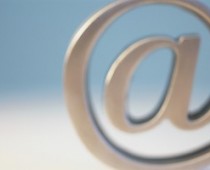Whether you want to increase your email’s open rate, are seeking more positive feedback from your messages or your
employee evaluation just came back needing improvement, you can raise the bar on your professionalism by following these simple rules for better emailing.
8 Ways to Write a Better Email Message:
- Announce your purpose. A subject line exists in every email platform or program, use it. Don’t be vague or mislead the reader as to what they’ll find upon opening. Being simple is more likely to get your message opened.
- Keep the message simple. Avoid discussing more than a maximum of 3 topics in one correspondence; any more than that will risk losing the reader’s interest.
- Use bullet points or numerals to keep your content brief. Short attention style reading is the preferred format for any email. Be respectful of the reader’s busy day and get right to message.
- Stick to the facts. Leave emotion out of your emails – never write or respond while angry, sad, reactionary or in haste. Once you press send it’s out of your hands. Far too often, you might have written it differently if you’d taken more time to think about it.
- State a clear and defined call-to-action. Tell the reader what you want from them. If you need a response by a certain time or date, share that too. No need to be demanding, but be sure to communicate any realistic expectations, willingness for flexibility and thankfulness.
- Let the reader know where to find you. Close every email with a variety of ways to contact you. List phone number and website or blog address at the least. If you’re old-school you can even add an address and a fax number. But if you have them, the most valuable things you can promote are your social media platform links (Twitter handle, LinkedIn Profile or Facebook page). Use your emails to grow your audience.
- Keep attachments in condensed format. Sending files that are too large can clog up either or both servers, making it an inconvenience to the reader. Files with too many graphics or video will take longer to download and use more space to save. Additionally, be sure to label each attachment clearly; never use a series of numbers as a file name or omit the date of the latest version.
- Copy or Blind Copy only those who need to see it. Refrain from the urge to Reply All when there has not been a specific request to copy everyone. In cases of a response to a question or an RSVP, it’s more appropriate to reply directly to the sender. Always be cognizant and respectful of the reader’s time.
Ultimately, these 8 simple rules will keep you organized, effective and courteous.
Other related links on this and similar topics:
- In Celebration of Really Bad Email
- Rachael Ray & I Have a Story
- 13 Common Sentence Starters That Kill Your Independence
Got any other ideas? Send them over in a comment!







 The Writes and Wrongs of Email Messaging
The Writes and Wrongs of Email Messaging